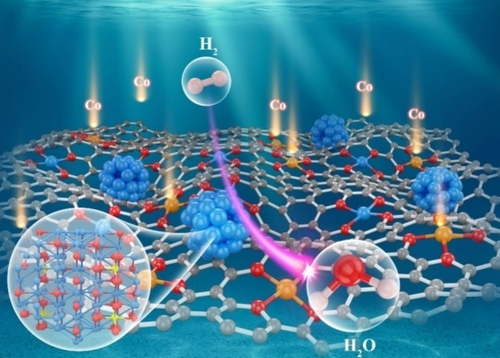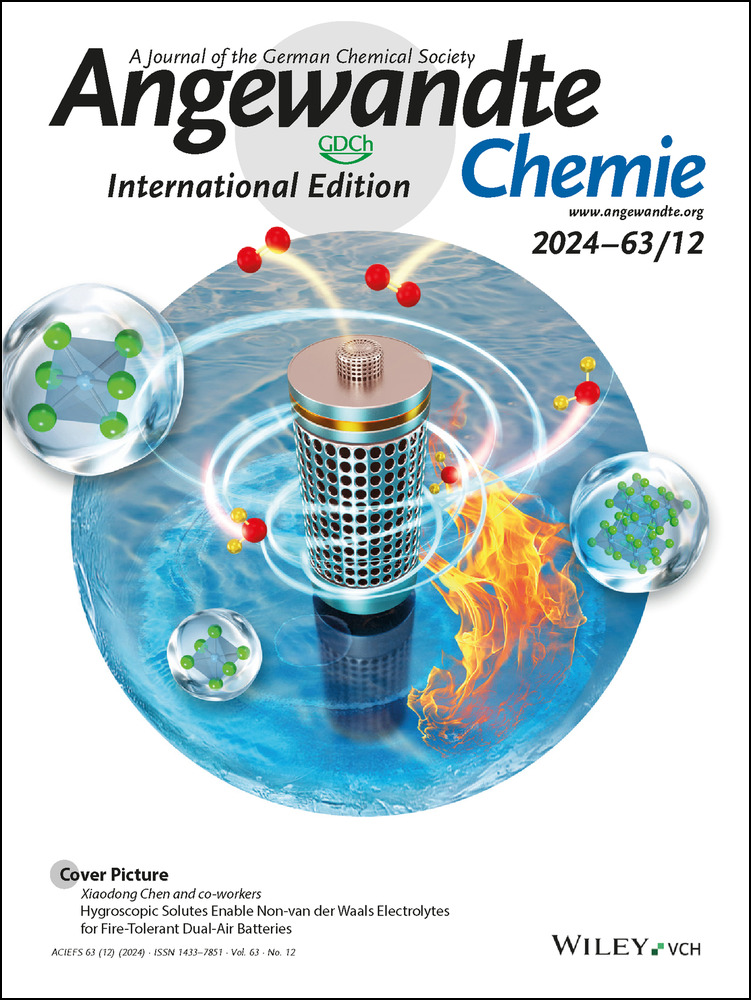Symmetry-Broken Ru Nanoparticles with Parasitic Ru-Co Dual-Single Atoms Overcome the Volmer Step of Alkaline Hydrogen Oxidation
Graphical Abstract
The symmetry of ultrasmall Ru nanoparticles is compromised by embedding Co single atoms, leading to the release of Ru single atoms and the formation of a Co1Ru1,n/rGO structure, which regulates the interaction between active sites and enhances the hydrogen oxidation reaction kinetics, mass activity and excellent durability.
Abstract
Efficient dual-single-atom catalysts are crucial for enhancing atomic efficiency and promoting the commercialization of fuel cells, but addressing the sluggish kinetics of hydrogen oxidation reaction (HOR) in alkaline media and the facile dual-single-atom site generation remains formidable challenges. Here, we break the local symmetry of ultra-small ruthenium (Ru) nanoparticles by embedding cobalt (Co) single atoms, which results in the release of Ru single atoms from Ru nanoparticles on reduced graphene oxide (Co1Ru1,n/rGO). In situ operando spectroscopy and theoretical calculations reveal that the oxygen-affine Co atom disrupts the symmetry of ultra-small Ru nanoparticles, resulting in parasitic Ru and Co dual-single-atom within Ru nanoparticles. The interaction between Ru single atoms and nanoparticles forms effective active centers. The parasitism of Co atoms modulates the adsorption of OH intermediates on Ru active sites, accelerating HOR kinetics through faster formation of *H2O. As anticipated, Co1Ru1,n/rGO exhibits ultrahigh mass activity (7.68 A mgRu−1) at 50 mV and exchange current density (0.68 mA cm−2), which are 6 and 7 times higher than those of Ru/rGO, respectively. Notably, it also displays exceptional durability surpassing that of commercial Pt catalysts. This investigation provides valuable insights into hybrid multi-single-atom and metal nanoparticle catalysis.
Open Research
Data Availability Statement
The data that support the findings of this study are available from the corresponding author upon reasonable request.





